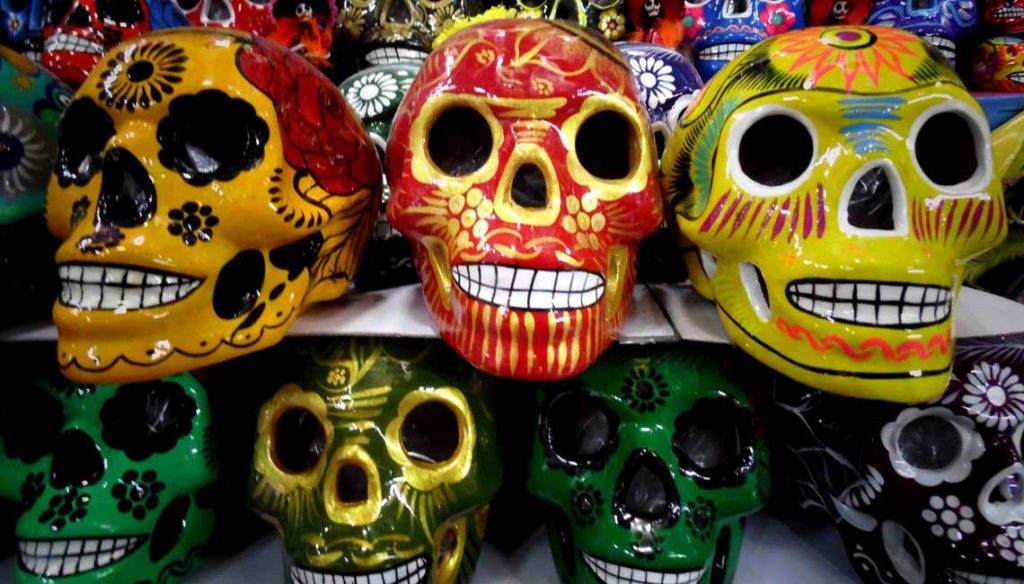
Nobody escapes death
Amparo Ochoa, La Calaca
We have the same end
In petate or in petaca
This season is full of festivities associated with the end of the summer harvests and the renewal of nature. In various traditions around the world, the dead are known to come to life and approach living people.
The Anglo-Saxon tradition of Samhain or Halloween means All Saints’ Eve and represents the beginning of the new year for the Celtic culture. Its form of celebration dates back to 3000 years old when it was believed that the deceased walked among the living as ghosts. People organized rituals to make them return to the path of eternity, one of them was dressing up in costumes and masks to emulate the spectres. This custom came to North America with the Irish migration and has taken root in several countries on the continent.
The societies in America, before the European conquest, had a religiosity related to the belief in life beyond death and the periodic presence of the deceased among the living. The Catholic Church, with its evangelization, unified all these beliefs on the first day of November, which, since the 10th century, was to remember the first saints who died for the defence of religion and the second day was dedicated to the faithful departed.
In this way, syncretisms and interesting traditions were created, involving family reunions, food, ceremonies and the memory of those who have left.
In Guatemala, people usually visit cemeteries from November 1, arranging the graves of their relatives and leaving flowers. At home, they will prepare an exquisite and laborious dish called fiambre, a very appropriate name for the time, which has pieces of chicken, sardines, dried meat, sausages, sausages, cheese, olives, capers, vegetables and beetroot that paint the entire stew purple and that they share as a family.
In some communities in Colombia, they celebrate November 2 as All Souls’ Day. In the Pacific zone, of Afro-descendant influence, lullabies are sung to the dead. People visit cemeteries and carry flower arrangements with the purpose of helping souls, who are in purgatory, to reach heaven according to Catholicism. These beliefs of the native peoples have been diluted over time.
In Cartagena de Indias and other cities, there is a celebration called Ángeles Somos, to pray for the deceased in every house. It is an activity that consists of children going out into the streets, loaded with pots, to collect food offered by their neighbours and cook a dish called sancocho, which is a traditional soup made with meat or fish, as well as potatoes, yucca, yams. and banana; this is tasted in the community these days.
In Brazil, European celebrations, African traditions and the influence of Buddhism are combined, due to the abundant Japanese migration in that southern country, giving way to what is called in Portuguese Dia dos Finados, that is, Day of the Dead. People of all traditions go to cemeteries to remember their deceased and bring flowers. Today it is the older people who cultivate these customs and, in the new generations, it is being lost.
Few societies deny the existence of eternal life and, whatever the custom or tradition, it is always a good time to reflect on death and encourage dialogue between families of different generations to express the feelings, fears and beliefs of everybody.
At Del Pueblo Funeral Home, we recommend you visit the November celebration guide through the Hola Houston page and enjoy the cultural diversity that the city offers to keep in memory those who came before us and never forget them. Thus, we remind you that we make the most difficult moments easy.
(We thank our informants for conducting the research for this article: Marina Moela from Brazil, Carlos Rueda from Colombia, and Gloriana González from Guatemala).
